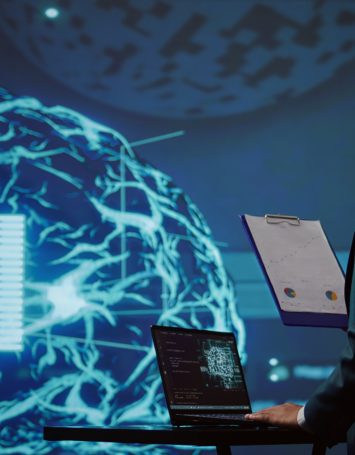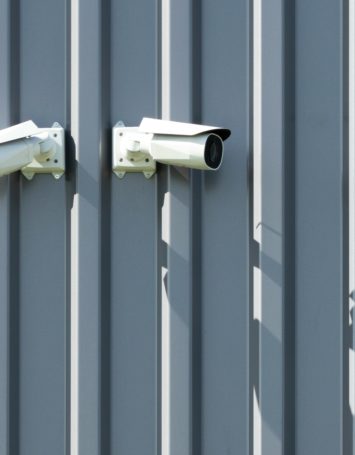Written by: Brendan Mee
The Patent Trial and Appeal Board (PTAB) has discretion under 35 U.S.C. § 314 to deny institution of an Inter Partes Review (IPR) even if the petition meets the statutory threshold. Such discretionary denials dropped under Kathi Vidal, but denials will be more frequent following rescission of the Fintiv memo and even more so following guidance from Acting USPTO Director Coke Morgan Stewart issued on March 26, 2025.
As background, a precedential PTAB decision Apple Inc. v. Fintiv, Inc. (IPR2020-00019, Paper 11, March 20, 2020) articulated the factors to consider when denying IPR institution in light of parallel district court litigation. In June 2022, former USPTO Director Kathi Vidal issued a memorandum, commonly referred to as the “Fintiv memo”, which aimed to limit overly broad application of Fintiv. Specifically, the Fintiv memo addressed when the PTAB should not discretionarily deny an IPR petition due to parallel litigation, including: when the petitioner agreed not to pursue the same invalidity grounds in court that it raises in the IPR (a so-called Sotera stipulation); when the panel deemed the merits of the unpatentability arguments in the IPR petition to be compelling; when the “parallel litigation” was an International Trade Commission (ITC) proceeding; and when the district court litigation was not realistically near trial. Under the policy of the Fintiv Memo, strong IPR petitions to invalidate weak patents became effectively immune to discretionary denial.
But the petitioner-friendly regime for challenging patents by IPR is gone with a stroke of the pen. On February 28, 2025, Acting USPTO Director Coke Morgan Stewart rescinded the Fintiv Memo. Then, on March 24, 2025, the USPTO published an updated Guidance on USPTO’s rescission of “Interim Procedure for Discretionary Denials in AIA Post-Grant Proceedings with Parallel District Court Litigation”. The PTAB can again apply Fintiv in all parallel proceedings, including ITC cases. A Sotera stipulation, while still “highly relevant,” is no longer dispositive – meaning it no longer guarantees avoidance of a denial. Likewise, even if a petition presents compelling merits, that alone is not enough to foreclose discretionary denial. In short, the Fintiv factors are fully back in play.
Then, on March 26, 2025, Director Stewart issued a Memorandum on Interim Processes for PTAB Workload Management describing a new bifurcated process for determining discretionary denials of IPRs. Under the new process, the USPTO Director (with at least three PTAB judges) will review the case for discretionary denial considerations separately from the merits. Only if the Director decides at this stage not to discretionarily deny will the petition proceed to the second stage, where a PTAB panel evaluates the merits of the patentability challenge.
Under the March 26th Memo, patent owners get an opportunity to argue for discretionary denial in a separate brief (up to 14,000 words) focused solely on why the PTAB should use its discretion to deny the IPR, due within two months of the petition. The petitioner can then file an opposition brief (also up to 14,000 words) within one month to argue why the IPR should be instituted notwithstanding parallel proceedings. The introduction of a dedicated briefing sequence for Fintiv issues underscores the emphasis on carefully vetting discretionary denial arguments. (For pending petitions already in process as of the memo date, the memo provides an opportunity for patent owners to add a discretionary denial brief by April 26, 2025).
Stewart’s memorandum also invites consideration of new factors, beyond the original Fintiv factors, that may be considered in deciding to deny IPR institution. including: (a) changes in law or new judicial precedent since the patent issued that might affect validity; (b) the extent of the petition’s reliance on expert testimony (suggesting the Board might weigh if a case hinges on dueling experts); (c) “settled expectations” of the parties – e.g., how long the patent has been enforced or if the patent is near expiry; and (d) compelling public interests such as economic impacts, public health, or national security concerns. These additional factors give the Director broader latitude to deny institution in the interest of policy or fairness, even if the traditional Fintiv factors alone might not warrant denial.
Notably, the memo explicitly allows consideration of the PTAB’s workload and ability to meet deadlines when deciding whether to institute an IPR. This factor takes on a special poignancy in light of an email circulated to the PTAB Administrative Patent Judges (APJs) reported in Law360® on March 21, 2025, telling the APJs to get their service records in order to prepare for layoffs.
* * * *
Claim Construction in IPR Denials
In Cambridge Mobile Telematics, Inc. v. Sfara, Inc., IPR2024-00952, Paper 12, (PTAB December 13, 2024) (“Cambridge”), the Patent Trial and Appeal Board (“PTAB”) denied institution of Inter Partes Review (IPR) because the Petitioner failed to address mean-plus-function construction of the claims—even though the Petitioner did offer a claim construction: the same “plain and ordinary meaning” claim construction that Patent Owner had applied in the parallel district court litigation.
The PTAB designated the decision as “informative” on March 20, 2025. Of course, the designation came on the heels of the Fintiv memo being withdrawn, and may be also filed under the heading, “ways to increase the number of discretionary denials under 35 U.S.C. § 314.”
The challenged patent in the IPR is U.S. Pat. No. 8,989,952, entitled System and Method for Detecting Vehicle Crash. The claim limitations at issue were: “a mode determining component operable to detect whether the device is in the vehicle … a first detecting component operable to detect a first parameter … and second detecting component operable to detect a second parameter ….” A patent practitioner recognizes such limitations as potentially susceptible to means-plus-function construction.
Under 35 U.S.C. 112(f), a claim element “may be expressed as a means or step for performing a specified function without the recital of structure, material, or acts in support thereof, and such claim shall be construed to cover the corresponding structure, material, or acts described in the specification and equivalents thereof.” Using the word “means” in a claim, in the absence of structure, creates a rebuttable presumption that the claim invokes means plus function interpretation. Williamson v. Citrix Online, LLC, 792 F.3d 1339, 1348 (Fed. Cir. 2015).
But Section 112(f) may also be used offensively to invoke means-plus-function for claims that don’t have “means for” language. If a “nonce word” (such as, in this case, a “component”) is coupled to a function without recitation of any structure for carrying out the function, then the limitation is a mean-plus-function limitation. And if the “corresponding structure, material, or acts” are not found in the specification, a claim interpreted as “invoking” means plus function, will be found indefinite under 35 U.S.C. § 112(b) (see generally MPEP § 2181).
As part of the required content of an IPR Petition under 37 C.F.R. § 42.104, § 42.104(b)(3) requires a statement that identifies “[h]ow the challenged claim is to be construed.” And “[w]here the claim to be construed contains a means-plus-function or step-plus-function limitation as permitted under 35 U.S.C. 112(f), the construction of the claim must identify the specific portions of the specification that describe the structure, material, or acts corresponding to each claimed function”.
The wrinkle in Cambridge is that the petitioner did provide a statement identifying how the challenged claim was to be construed, and it was the same “plain meaning” construction the patent owner offered in the district court limitation. Nevertheless, two of the three APJs on the panel found that failure to address whether the “component” terms were means-plus-function limitations rendered the petition deficient and denied institution on that basis.
A concurring opinion by APJ Horvath offered an alternative ground for denying institution, which was quite interesting. In a software-implemented invention, the “structure” for performing a function in the claim is often a computer processor. And “[i]f the corresponding structure is a processor executing computer software, the specification must disclose and clearly link the recited function to an algorithm that transforms [a] general purpose microprocessor into a ‘special purpose computer programmed to perform the disclosed algorithm.’” IPR2024-00952, Paper 12, Concurrence p. 4, citing Aristocrat Techs. Austl. Pty Ltd. v. Int’l Game Tech., 521 F.3d 1228, 1338 (Fed. Cir. 2008).
In APJ Horvath’s view, the claim was clearly means-plus-function and could not be construed due to the absence of corresponding structure in the specification. Therefore, denying institution was proper under Samsung Elecs. Am., Inc. v. Prisua Engin. Corp., 948 F.3d 1342, 1353 (Fed. Cir. 2020). However the institution denial is “packaged,” Cambridge shows how claim construction issues, particularly means-plus-function claim construction issues, and potential invalidity under 35 U.S.C. § 112(b), may be backed into an IPR, which by statute only addresses invalidity over prior art.
The discretionary denial in Cambridge tracks with general trends coming from the USPTO following the rescission of the Fintiv memo on February 28, 2025. Time will tell, but these statements and decisions may portend more than the expected needle fluctuations between more and fewer discretionary denials. We may well see fewer APJs, fewer IPRs and more discretionary denials overall.
* * * *
Layoffs Coming at PTAB
In other news from the PTAB, on March 21, 2025, Law360® reported that layoffs of Administrative Patent Judges (APJs) at the PTAB are likely imminent. Chief APJ Scott Boalick advised APJs at the PTAB in an email to make sure their service records are complete, because “those records will determine seniority for retention in a reduction of the workforce.” The reductions in force are expected to be implemented after the current round of voluntary retirement offers ends on April 17, 2025.
Increasing discretionary denials of IPRs goes hand in hand with reducing the number of APJs to decide them. This is not motivated by cost-saving—IPR fees are required by statute to reflect the costs of conducting them. Nor is there any increase in government efficiency—IPRs operate on rigid timelines explicitly designed to outpace district court litigation and cost less. The only aim of these actions is to reduce the footprint and power of the federal bureaucracy.
Patent practitioners will attest that APJs at the PTAB are, to a person, distinguished lawyers, and they deserve better than this. Without the personnel to run IPRs, the statutory mandate for them will be kneecapped. Elon Musk famously said, “patents are for the weak”. Debatable—but noted. However, access for inventors to a patent system is provided for in Article I, Section 8, Clause 8 of the U.S. Constitution. Indeed, many of the rights and privileges enshrined in that document are “for the weak”. That is not grounds to eliminate them.
*The opinions expressed herein are the author’s own and should not be imputed to Pearl Cohen or any of its clients*.



